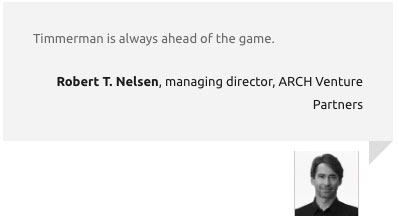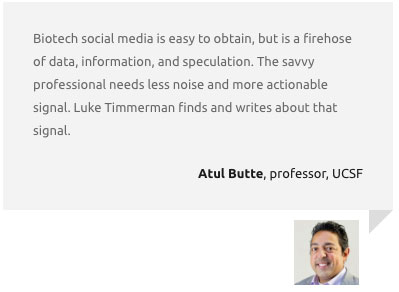Learning From Post-It: Your Solution Is Not My Problem – Except When It is

David Shaywitz
A frequent – and frequently correct – critique of entrepreneurs bearing technology is “your solution is not my problem.”
Healthcare – among many other domains, perhaps all domains – has been beset by “solutionism,” the idea that my clever technology will solve your hideously complex problem.
But perhaps it makes no more sense to instinctively reject this mindset as it does reflexively embrace it. After all, technological advances have enabled profound scientific advances as well as contributed to a range of benefits and comforts we take for granted.
But in each instance, someone had to figure out how to apply an emerging new technology to a relevant task.
A prismatic example may be found in the invention of the Post-It note. It was developed in the 1970s by a 3M research chemist named Spencer Silver and a 3M chemical engineer, Art Fry. Silver passed away this week; the fascinating story behind the Post-It was eloquently captured in his New York Times obituary by Richard Sandomir.
In the early 1970s, Silver had been trying to make a super strong adhesive that could be used in aircraft construction. Instead, he developed something that was comparatively weak, but which stuck to surfaces, peeled easily, and was reusable. The glue was patented in 1972, but despite Silver’s efforts to highlight its potential within 3M, it didn’t get much… traction. But he reached many colleagues, including Fry, who was trying to develop new products.
One day, at choir practice, Fry found himself wishing he had had a way to mark the songs in his hymnal – the slips of paper he had been using kept falling out. But if only there was some way to make the slips stick to the pages…
The Post-It note was born.
The Post-It Note (original name: Press ‘n Peel) was introduced in test markets in 1977, and nationally in 1980. According to the Times, “There are currently more than 3,000 Post-it Brand products globally.”
When you think about how this invention happened, it’s clear that the technology – the novel adhesive – was developed first, and its properties and capabilities studied and understood. Then, the originator of the technology – Silver – went looking for something useful to do with it. It was unarguably a solution in search of a problem. And Fry eventually provided the problem.
Silver turns out to be in good company. Many accomplished entrepreneurs begin with solutions, and cast about for the right problem.
As serial entrepreneur Max Levchin, co-founder of the billion-dollar startups PayPal and Affirm, explains in Ali Tamaseb’s Super Founders (discussed here),
“Most companies that I’ve started have been these really half-baked ideas that were initially about technology. I don’t often look at the world as ‘There’s a big problem; what can I bring to bear to solve it?’ Instead, I sort of say, ‘I can do this cool thing. That’s a nice hammer. What’s a nail?’ Sometimes you have hammers looking for nails and there’s no value to be built. But a lot of times, you can actually look at something new, and say, ‘Oh, cool. Artificial intelligence – it will help us to X. Or virtually reality – this will be useful for Y.’”
In some sense, you can also view the “pivots,” so central to startup evolution, as an expression of technology’s search for a problem.
“That’s a nice hammer. What’s a nail?” – Max Levchin, co-founder, PayPal and Affirm
Tamaseb cited a number of familiar examples of technology applications that took a while to find their groove. These include:
- YouTube: envisioned originally as a dating site, with the slogan “Tune In, Hook Up”
- Shopify: founded as an e-commerce site for snowboarding equipment, pivoted to software that facilitates e-commerce
- Instagram: initially a site like FourSquare where users could check-in – eventually founders focused on photos
- Slack: initially an online game company that later focused on the internal communication tool they developed
From the perspective of healthcare, the point is that figuring out how to use raw new technology in a notoriously complex domain like healthcare is inordinately difficult, but also vitally important.
Healthcare incumbents may have been right to reject many of the arrogant and ignorant technologists who showed up 10 years ago, certain their app would “solve” healthcare. Incumbents may also be right to look critically on the digital transformation imperatives consultancies are urging organizations to adopt post-haste.
But there needs to be a thoughtful middle ground between the false comforts of tech worship, on the one hand, and tech cynicism, on the other.
Like Art Fry, we need to thoughtfully engage with technology developers like Spencer Silver, ideally in an environment that cultivates such engagement and exploration, like 3M in the 1970s.
As Safi Bahcall writes in Loonshots (my Wall Street Journal review here), when 3M brought in a new CEO whose single-minded focus on efficiency squeezed out such chance encounters, innovation plummeted. It didn’t recover until another CEO restored the old system.
This lesson is especially relevant to healthcare.
To discover new medicines, it’s critical to provide “the intellectual space for tinkering and capitalizing on the chance observations and unexpected directions so important in medical research,” Nassim Taleb and I wrote in 2008.
An inquisitive culture is equally vital for the practice of medicine itself – see this PLOS Medicine commentary, and this Atlantic piece.
The point: innovation blossoms in an environment and culture that affords adequate oxygen — time, space, and (critically, I’d argue) receptivity to novelty — for innovators to match promising new, and perhaps still somewhat raw technology with pressing, worthy, and suitable problems.





